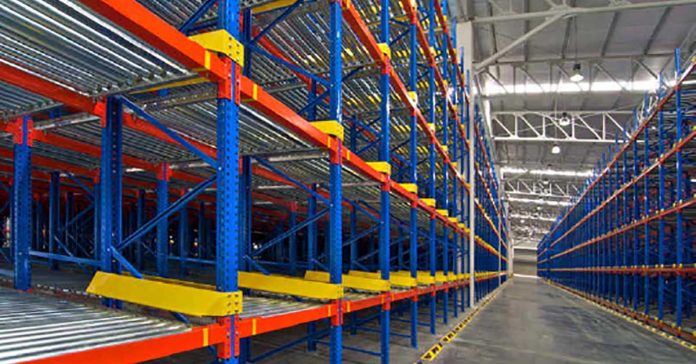In the world of warehouse storage, efficiency and space optimization are paramount. One storage system that has gained popularity for its ability to maximize space and improve operational efficiency is pushback racking. This article delves into the mechanics, benefits, and applications of pushback racking, highlighting why it is a preferred choice for many businesses.
What is Pushback Racking?
Pushback racking is a type of pallet storage system that allows for multiple pallets to be stored on a slight incline within the same lane. Unlike traditional racking systems where forklifts place pallets directly into the storage position, pushback racking uses gravity and a series of nested carts that roll on inclined rails. When a new pallet is loaded, it pushes the existing pallets back, making room for the new one. This system operates on a Last In, First Out (LIFO) basis, meaning the last pallet loaded is the first one to be retrieved.
How Does Pushback Racking Work?
Pushback racking systems are designed with inclined rails and a series of nested carts. Here’s a step-by-step breakdown of how it works:
- Loading: A forklift places the first pallet onto the top cart, which sits at the front of the lane.
- Pushing Back: When a second pallet is loaded, it pushes the first pallet back, allowing the second pallet to rest on the next cart.
- Continuing the Process: This process continues until the lane is filled to its capacity, with each new pallet pushing the previous ones further back.
- Unloading: When it’s time to retrieve a pallet, the process is reversed. The forklift removes the front pallet, and the remaining pallets move forward to fill the empty space, thanks to gravity.
Benefits of Pushback Racking
Pushback racking offers several advantages that make it an attractive option for many warehouses and distribution centers:
1. Space Optimization
By allowing multiple pallets to be stored in a single lane and utilizing the depth of the storage area, pushback racking maximizes available space. This is particularly beneficial in warehouses with limited square footage.
2. Increased Storage Density
Pushback racking systems can store more pallets in the same area compared to selective racking. This increased storage density is ideal for businesses with a high volume of inventory.
3. Improved Accessibility
Since the system operates on a LIFO basis, the most recently stored pallet is always at the front, making retrieval quick and easy. This reduces the time forklifts spend navigating through the warehouse, enhancing overall efficiency.
4. Versatility
Pushback racking can accommodate a variety of pallet sizes and weights, making it suitable for different types of inventory. Additionally, it can be integrated with other storage systems for a customized solution.
Applications of Pushback Racking
Pushback racking is versatile and can be used in various industries. Here are some common applications:
1. Food and Beverage
In the food and beverage industry, quick and efficient access to inventory is crucial. Pushback racking ensures that products are easily accessible while optimizing storage space.
2. Retail
Retailers often deal with a high turnover of inventory. Pushback racking allows for efficient storage and retrieval of products, ensuring that stock is always available for restocking shelves.
3. Manufacturing
Manufacturers can benefit from pushback racking by storing raw materials and finished goods in a compact and accessible manner. This system supports a streamlined production process by keeping essential items within easy reach.
4. Logistics and Distribution
Distribution centers require flexible and high-density storage solutions. Pushback racking meets these needs by providing a system that can handle a large volume of pallets while ensuring quick access for order fulfillment.
Conclusion
Pushback racking is a highly efficient and space-saving storage solution that offers numerous benefits for warehouses and distribution centers. Its ability to maximize storage density, improve accessibility, and adapt to various applications makes it a valuable investment for businesses looking to optimize their storage operations. Whether in the food and beverage industry, retail, manufacturing, or logistics, pushback racking can enhance operational efficiency and support better inventory management.




















